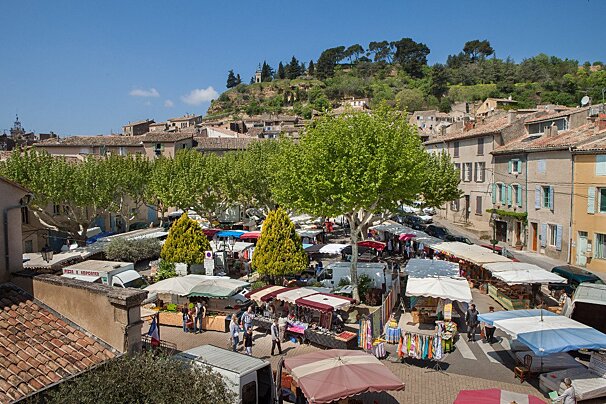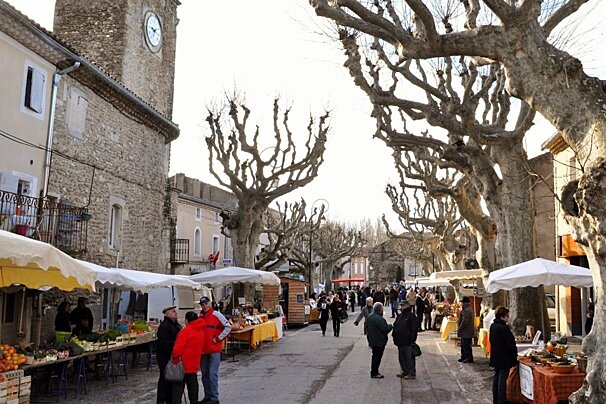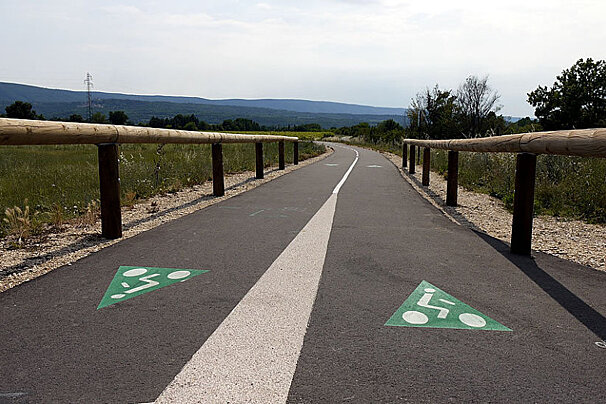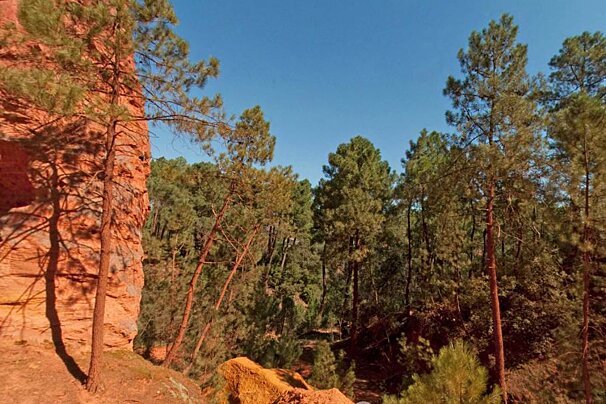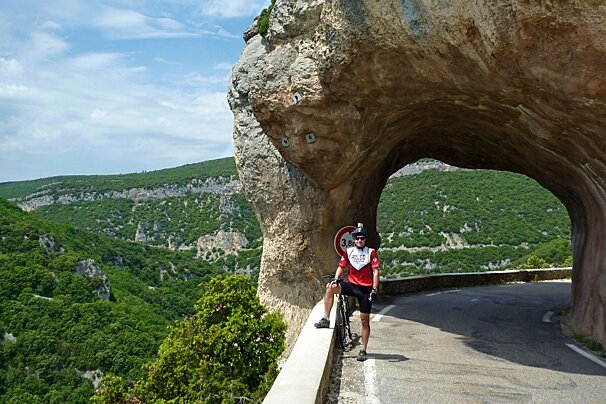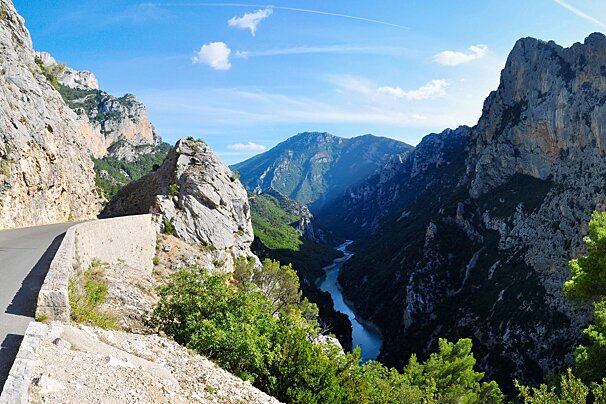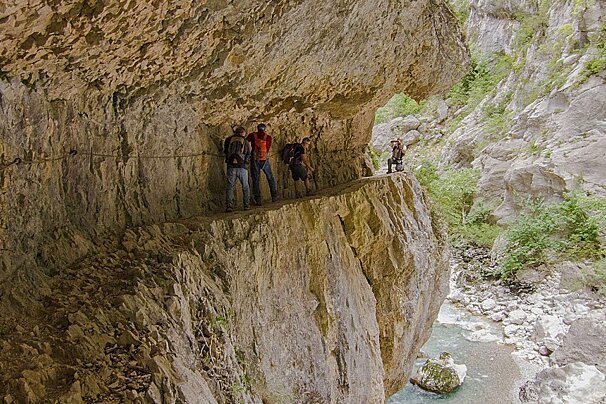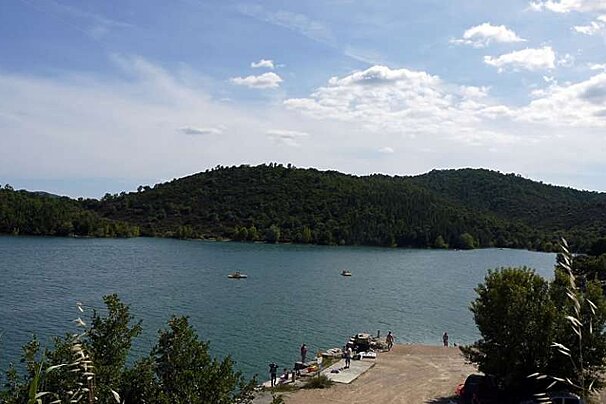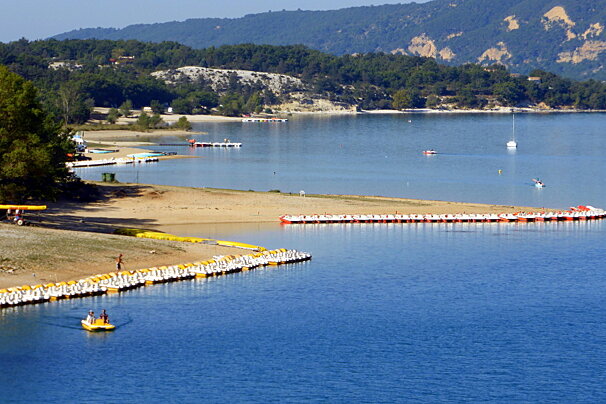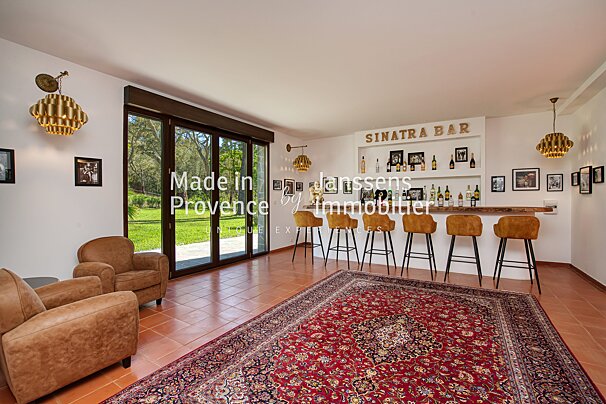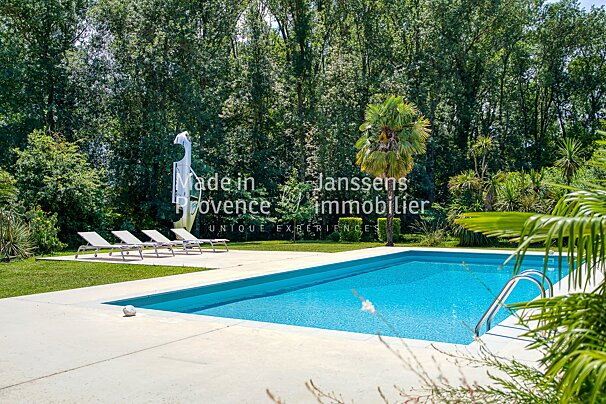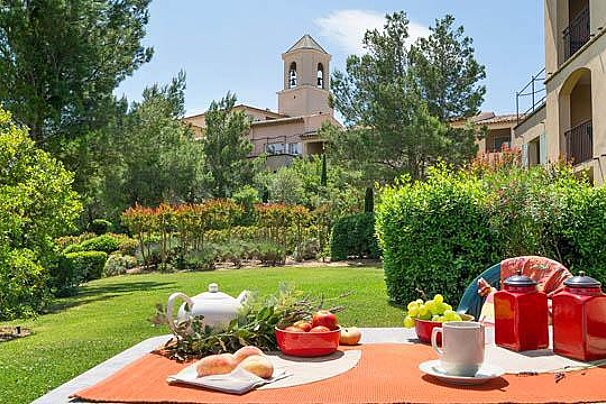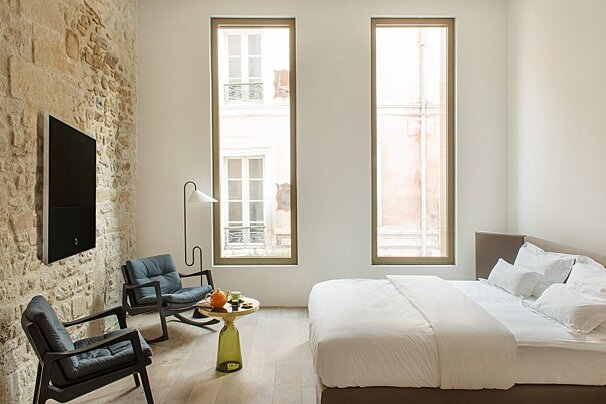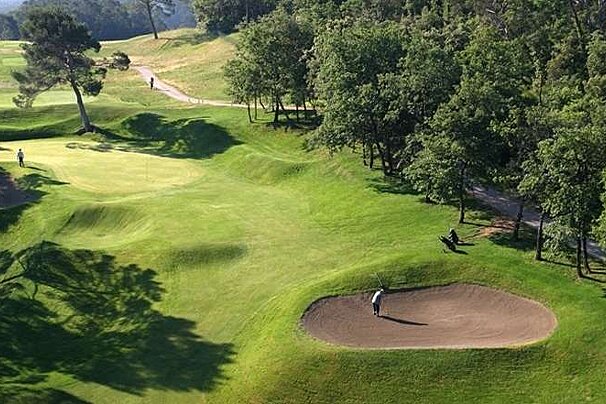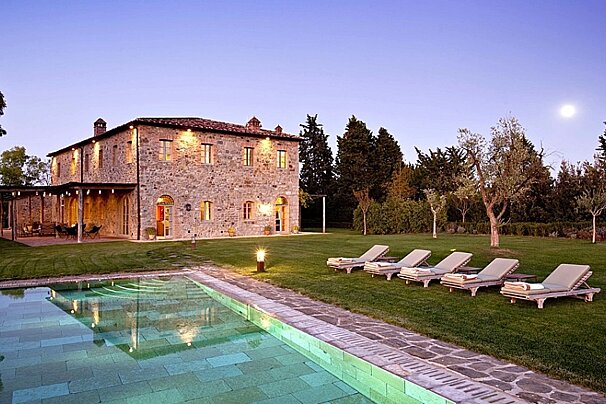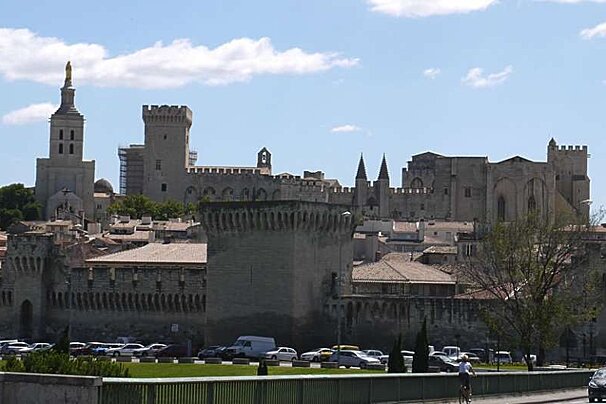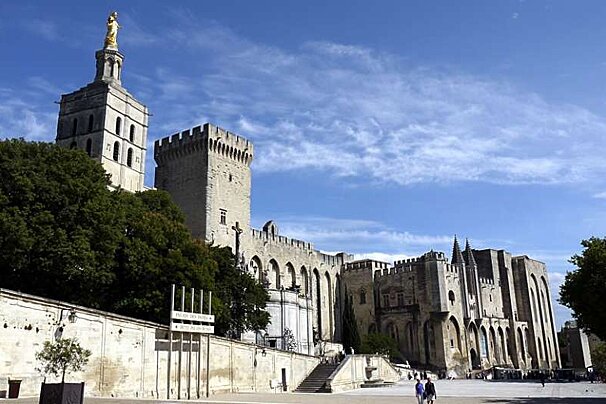There is a pretty river running right through the town spanned by a 12th century stone bridge, and a wide, shady boulevard with a big town square. Along with chestnut flavoured everything (from ice cream to soup), the town also has a thriving cork industry, harvested from the cork oak trees that grow in the surrounding hills. This is a very pleasant town far away from the crowds and heat of the Riviera.
Its main street is lined by Plane trees, shading the cobbled streets. Along them you'll find a couple of touristy shops and some attractive restaurants. In the square before the town hall resides a funky fountain, topped with a bronze cherub. In his arms he holds a fish that spouts water down to the basin. Every year, in August, Collobrières celebrates the construction of this fountain, when on that day its water changes into wine...
It's not the changing of water into wine, that gives the village its notoriety. It's the abundance of chestnut trees and their fruit. With La Garde-Freinet, Collobrières vies for the chestnut capital of the region. Both villages have their chestnut festivals in October. When the one village extended the festival to a second weekend, the other one followed toute de suite.
If you like chestnuts, in whatever form, the Maison des Marrons has a small museum next to it, where you can explore the makings of such sweet delicacies as marrons glacés. In the shop they sell chestnuts in every form: preserves, paste, and above all (recommended) ice cream.
Collobrières has some nice restaurants and shady pavement cafés, mostly specialising in Provençal food.
